Suborder Lacertilia Family Scincidae Phylum Chordata Rank Genus | Subphylum Vertebrata Infraorder Scincomorpha Scientific name Plestiodon Higher classification Skink | |
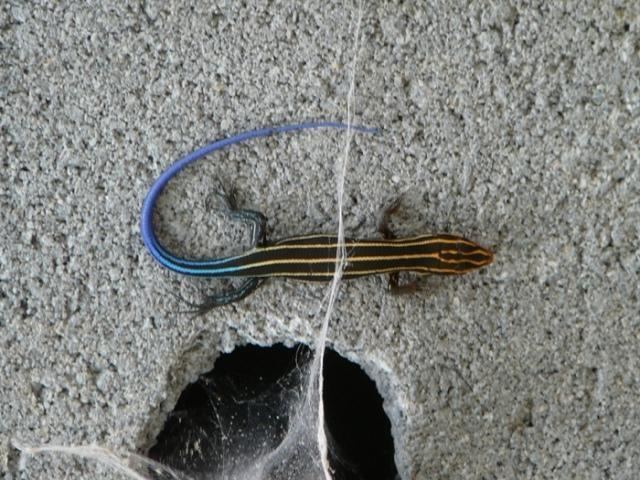 | ||
Lower classifications Plestiodon fasciatus, Plestiodon laticeps, Western skink, Japanese skink, Prairie skink | ||
Plestiodon is the name for a genus of lizards formerly referred to as Eumeces, except those now placed in Mesoscincus.
Contents
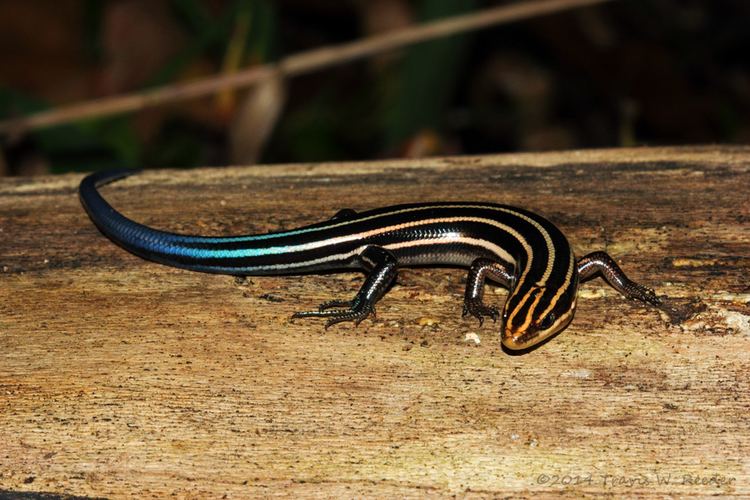
The genus Plestiodon are skinks (family Scincidae). They are secretive, agile animals with a cylindrical body covered with smooth, shiny scales.
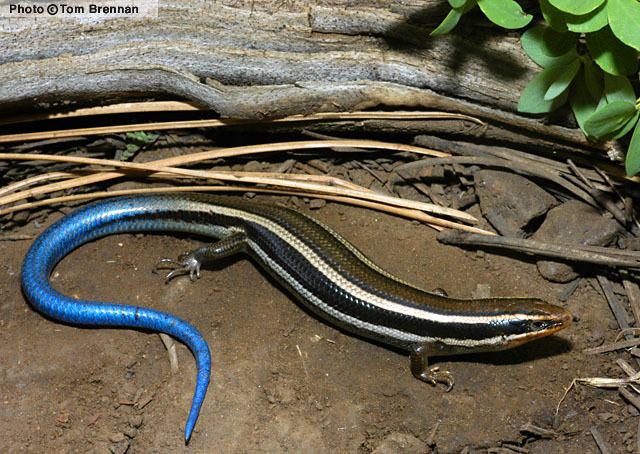
The common name for these lizards with a blue tail is the common five-lined skink.
Defensive mechanism
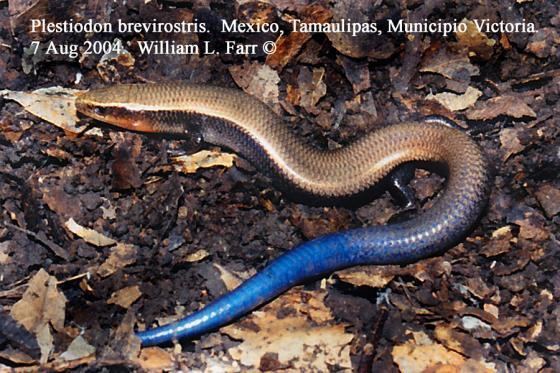
The conspicuous coloring is a survival trait: it attracts a predator’s attention to the tail of the animal, which will break off when grabbed. A skink thus often manages to escape and hide under some rock, log, or fallen leaves while the predator still contemplates the wildly thrashing severed tail. (This is an instance of what is called autotomy: voluntarily shedding a body part in order to escape, and later re generating the body part.) After the tail regenerates, it usually has the same color as the rest of the body and is typically shorter than the original tail. In some species, regrown tails are pinkish. A regrown tail has a cartilaginous rod for support instead of vertebrae.
Reproduction
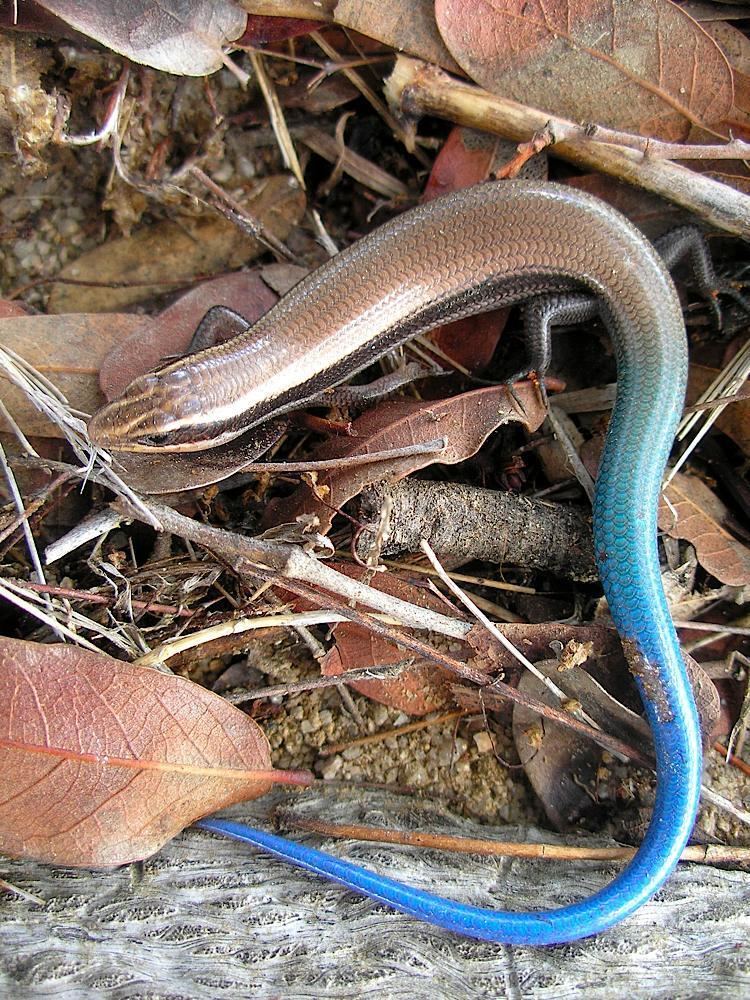
Plestiodon are all oviparous. The female lays eggs once a year after the breeding season in spring. The clutch size varies and is typically around 5 to 10 eggs. The hatchlings appear in late summer.
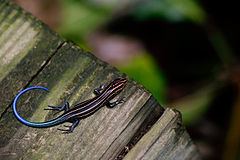
The mating season begins in May. The female plestiodon will lay its eggs in June, and four to six weeks after the incubation, the young hatch. Thus the birthing process consists of laying eggs and external incubation.
Thermoregulation
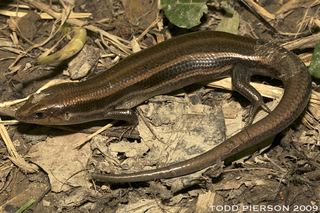
Like other reptiles, these skinks are "cold-blooded" — they are ectothermic animals: their metabolism cannot regulate their body temperature. To warm up, they often bask in the sun. In colder climates, they hibernate in winter in burrows below the frost line. In hot climates, they are active mainly in the morning and evening, staying under cover during the hottest hours of the day to avoid overheating.
Systematics
Recently two taxonomic revisions have been made regarding the 19th century genus Eumeces. They both resulted in similar results; the genus is paraphyletic and must be "sliced up" into several different genera. Griffith et al. (2000) proposed that the type species for Eumeces, E. pavimentatus, which is considered by many to be a subspecies of Eumeces schneideri, should be changed to Lacerta fasciata, so that the genus name Eumeces would stay with the most species-rich clade. However this petition has not been verified by the International Commission on Zoological Nomenclature. Schimtz et al. argued that Griffith et al. violated the Code and rejected the proposal on good grounds. Thus only the African species of the Eumeces schneideri group still belong to the genus Eumeces.
Within Eumeces the following species are recognized:
Some species that were formerly considered Eumeces have now been assigned to new genera:
Now in Plestiodon:
Now in Eurylepis:
Now in Mesoscincus:
